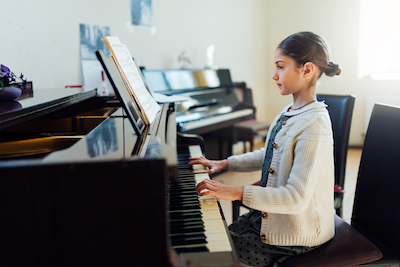With most actions, we perform them one hand at a time. Pick up a pencil, write a sentence, or tap out a rhythm and you’ll be operating one hand at a time.
But when you sit down to play the piano, things get a bit more complicated. Your right hand plays one part while your left hand plays another. And for many just trying to learn, it can be complicated at best. 
Some instructors will have you practice right hand and left hand separately before bringing them together. But is it the best way?
There are two different aspects to playing hands together that make it difficult. When you play two separate pieces of music with two separate hands, each is vying for your attentional resources. Each hand has to figure out what key on the piano to strike and what rhythm to give each note. You also have to keep in mind the details like dynamics and articulation. There’s only so much attention to go around, so focusing often becomes a problem.
Learning involves attention; if you have to give resources to two parts, it takes double the effort and more time to learn. You must focus on learning one part to success before giving time to the other part. But once you learn one part, it becomes more automatic, giving you more time to spend on the other. In some points of view, this makes sense.
However, it’s also important to note how the brain works. The left side of the brain controls the right hand, left hand controlled by the right side of the brain. As an infant, humans have a natural tendency for mirror movements. You’ll see this in a small infant as they routinely make hand movements together. But over time, your motor control takes over, and you learn to control this through interhemispheric inhibition. And when you use only one hand, it becomes more pronounced.
When you bring the two hands back together, it still feels a little difficult and clumsy.
Surprisingly, there are very few studies to determine which is the best method: hands separate or hands together learning. In a study conducted by Roberta Brown back in 1933, she found that it was more efficient and more enjoyable in using the hands together approach.
A study by Robert Duke also concluded that when pianists practiced music with both hands together method, it led to a better performance.
While there certainly isn’t a right or wrong approach, it’s important to remember that piano is a two handed instrument. That means the sooner you bring the two hands together, the quicker you feel the music as it works together with both hands, the more effective piano player you will become.
What’s your experience with playing piano with both hands?

